The housing market recovery in our two biggest cities, Melbourne and Sydney, gained pace with property prices increasing over the last month.
Buyers are back making plans, looking at properties and approaching their lenders for finance.
They are buoyed by falling interest rates and the prospect of another rate cut early next year and a generally positive media.
Sellers are slowly returning to the market encouraged by rising prices.
This now marks the fourth consecutive month of price gains in Melbourne and Sydney, which was where the downturn hit the hardest over the last couple of years.
As a result, auction clearance rates are up, asking prices are up, property values are increasing and some property commentators are even forecasting double digit capital growth next year.
Now we called the market bottom a few months ago in our regular Property lnsiders video chats, so to explain what’s really happening in our property markets and to give as his forecast of what’s ahead let’s chat with Australia’s leading housing economist – Dr. Andrew Wilson, chief economist of MyHousingMarket.com.au
Watch as we discuss this month’s news!
Another interesting month overseas
There is continued uncertainty regarding the global economic outlook.
• US Trade Wars – these are continuing, however with the next round of Presidential elections in 2020, Trump is going to want to go into that campaign with strong jobs growth and the US economy in good shape. So it’s likely Trump is going to look for a resolution to this issue sooner rather than later
• The Brexit saga: the uncertainty about this continues.
• Interest rates around the world are easing to try and stimulate economic growth. This was by the Federal Reserve in the USA reducing interest rates.
Australia’s Economic Data
• Australia’s GDP growth for the June quarter was reported as only 0.5%, bringing the annual rate of growth down to 1.4% from 1.7% in the March quarter - the slowest growth rate that we’ve seen in the economy for nearly 10 years. But remember this is a lagging indicator and really reflects what happened before and around the time of the Federal election and clearly things have changed considerably since then.
• In a well publicised speech RBA Governor Lowe explained he was looking for further progress towards full employment and to achieve the inflation target over time and explained our economy is gently turning around.
• We’re still creating plenty of jobs. 34,700 new jobs created for August. And we have been creating around 26,400 jobs every month since the start of this year. However, we’re seeing a record high level participation rate of 66.2% causing our unemployment rate to lift from 5.2% to 5.3% percent.
• Dwelling approvals have fallen for 21 months in a row with the latest figures (being for August) showing approvals are now at their lowest level since January 2013, being down 29% year-on-year and are below the estimated level of underlying requirements. This is particularly evident in the high-rise segment of the market as both developers and investors pull-back from the market.
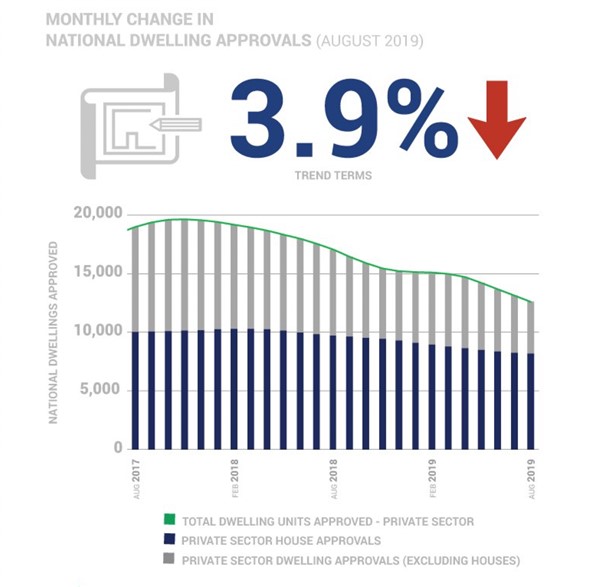
Interest rates fell to historic lows.
The recent evidence of a strong rebound in Sydney and Melbourne property values wasn’t enough to stave off a rate cut.
In what was a well telegraphed move, the RBA cut the official interest rate to 0.75% on October 1st citing weaker than expected growth in the domestic economy and global uncertainty.
The RBA made the following pertinent comments in their statement announcing the rate cuts:
• “The Board took the decision to lower interest rates further today to support employment and income growth and to provide greater confidence that inflation will be consistent with the medium-term target.
• “It is reasonable to expect that an extended period of low interest rates will be required in Australia to reach full employment and achieve the inflation target”.
• “The Board will continue to ease monetary policy further if needed to support sustainable growth in the economy, full employment and the achievement of the inflation target over time.”
The Governor’s Statement certainly opens the door to even lower rates although a follow up move in November seems unlikely.
Even though some lenders have already starting lowering their variable rates, it's going to take more than a rate cut or two to restimulate our economy.
In my mind the government now needs to implement fiscal reforms to drive long-run growth because it’s likely these rate cuts will have a smaller impact than in the past.
Interest rates are already at historically low levels and banks are clearly not passing on the full rate cut.
At the same time many Australians are stashing their cash and paying down debt rather than spending while businesses seem hesitant to invest due to the uncertain global economic outlook.
This means the RBA is going to be challenged by its forecasts and it will take a couple of years before it can get inflation to within this target range and unemployment down to the levels it is hoping for.
Interestingly lower interest rates haven’t stimulated employment or significant economic growth overseas, so they are not likely to have the result the RBA hopes for here either.
However, the rate cuts have had an impact on our property markets with rising property values around Australia.
Auction clearance rates point to higher prices ahead.
Auction clearance rates in both Melbourne and Sydney kept rising over the last month continuing the post-election bounce in confidence in our property markets.
The prospect of easier access to finance, falling interest rates and a tax cut has boosted confidence, driving strong auction results across Australia.
It is unlikely that clearance rates will rise any further now especially as more stock comes onto the market for sale in the next few months.
The Sydney auction market is surging reflecting by an increasing number of properties offered for sale under the hammer and higher sales values.
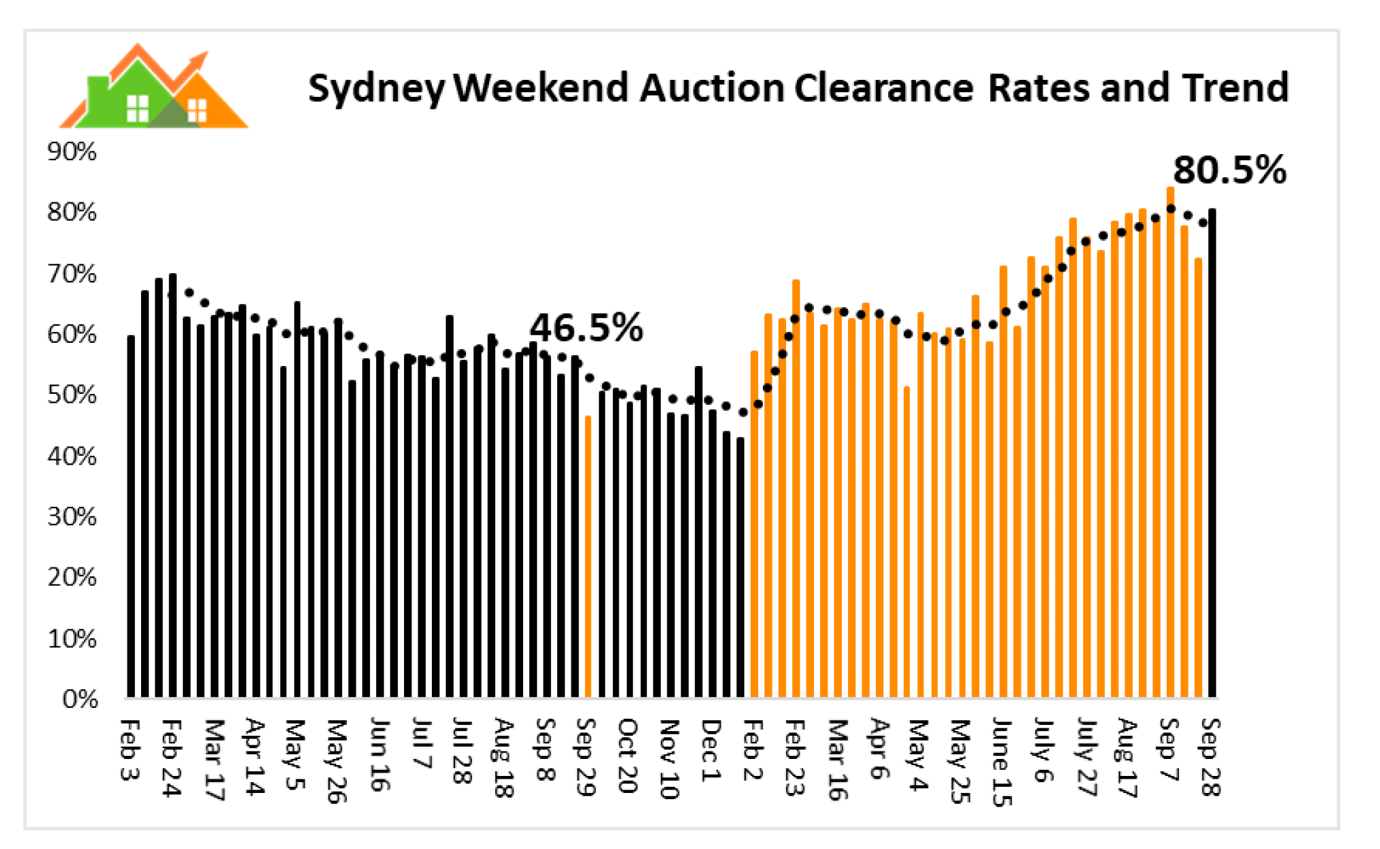
The Melbourne auction market has also performed very strongly, particularly in the inner eastern and south eastern suburbs.
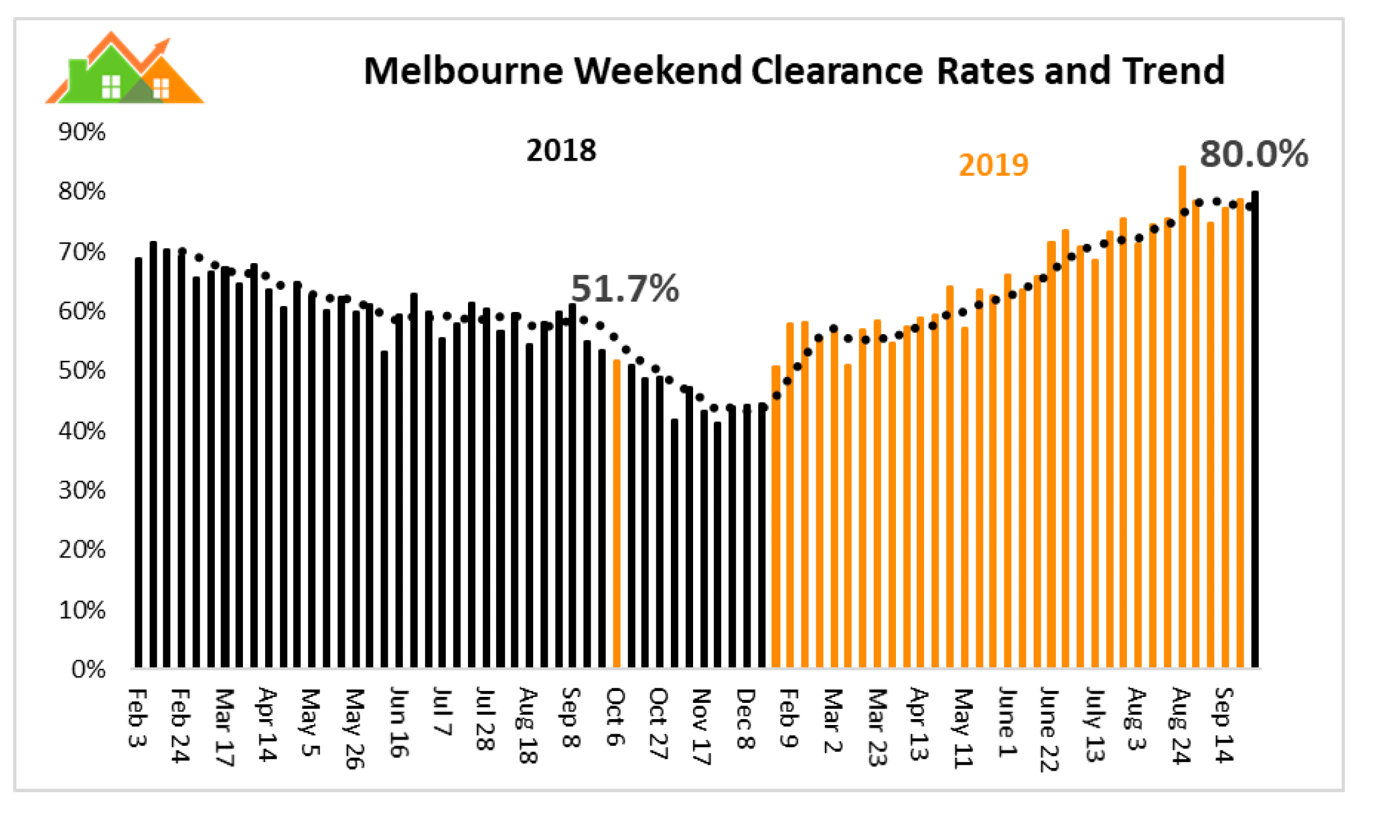
What’s happening to Asking Prices?
While median prices are often seen as the gauge of how the market is performing, these are a lagging indicator, demonstrating what happened a couple of months ago.
Asking prices are a more timely leading indicator, and they confirm that property prices are rising around Australia.
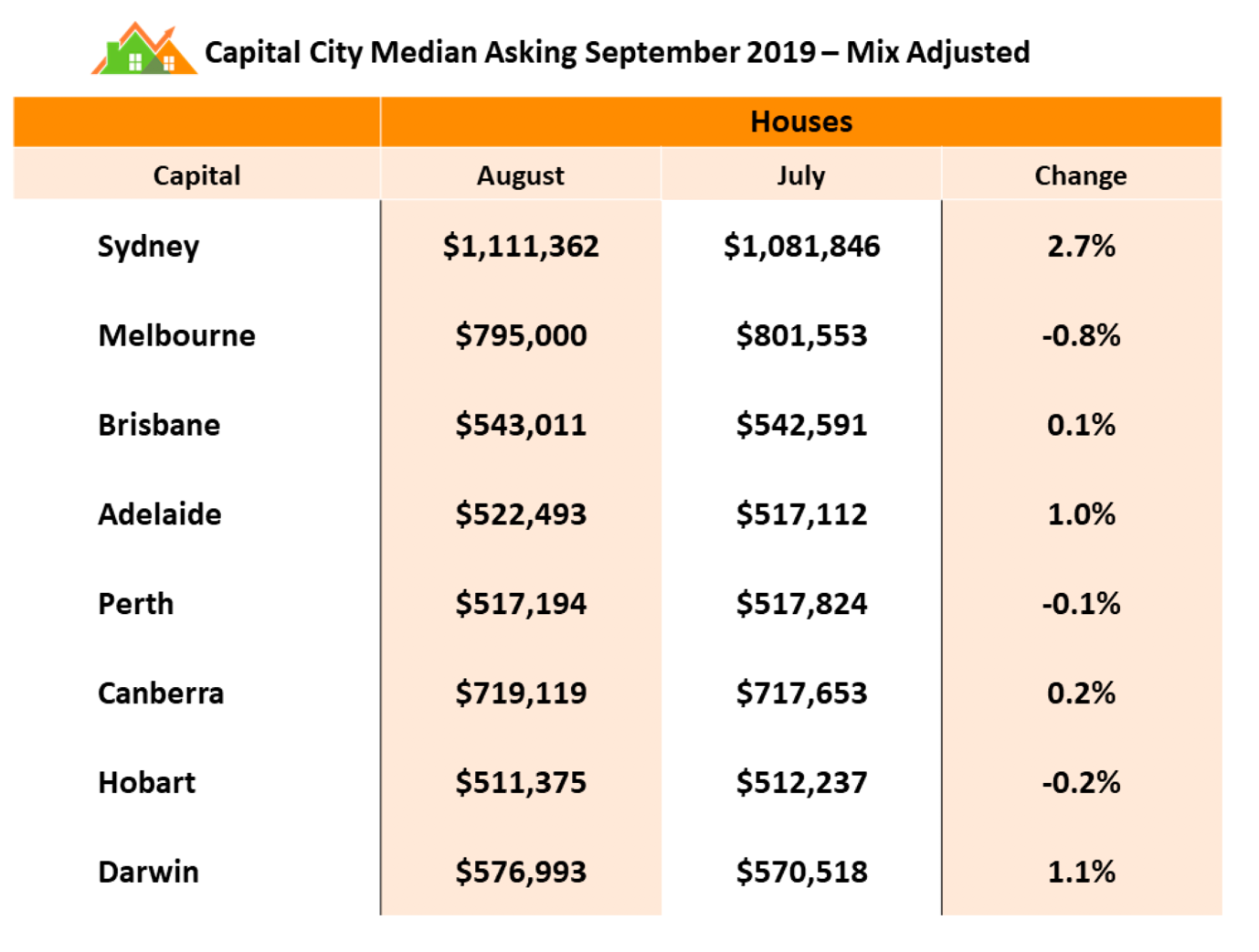
What’s ahead for property prices?
The rebound in housing conditions should help to support an improvement in economic conditions as higher housing prices translate to a wealthier and more confident household sector that will inclined to spend more.
Stronger housing conditions should also support the residential construction sector where approvals dropped through the housing downturn.
Overall property values are likely to rise modestly to the end of 2019 before growing about 3- 5 per cent in 2020.
It’s a great time to buy countercyclically in Sydney and Melbourne and ride the property next wave of the property cycle in Brisbane.
The downside for these capital city markets is minimal and there is now plenty of upside ahead over the next few years.
The rental markets
Our rental markets are still relatively flat, and vacancy rates have crept up a little over the last month in Sydney and Melbourne.
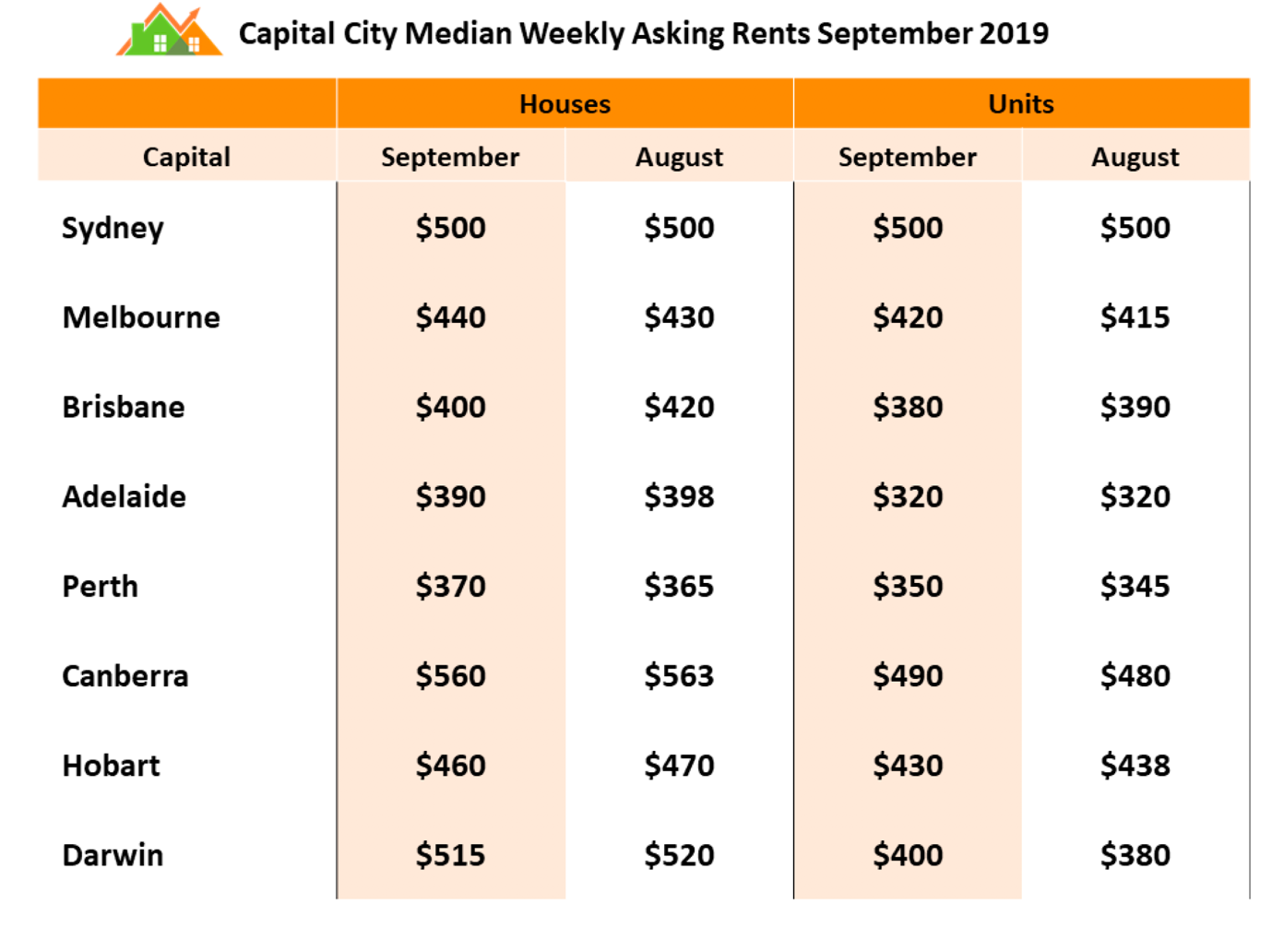
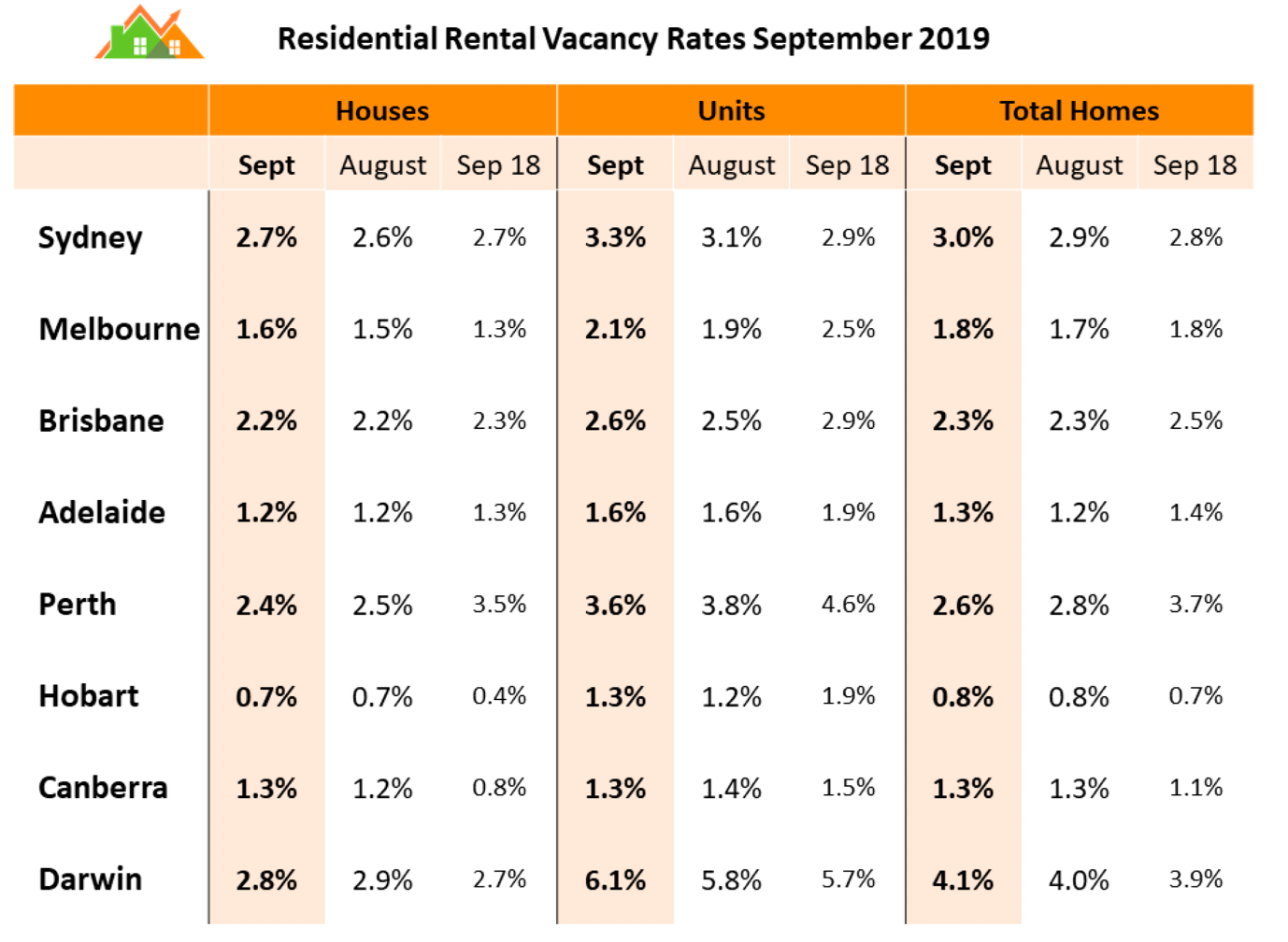
With thanks to PropertyUpdate.com.au and MyHousingMarket.com.au